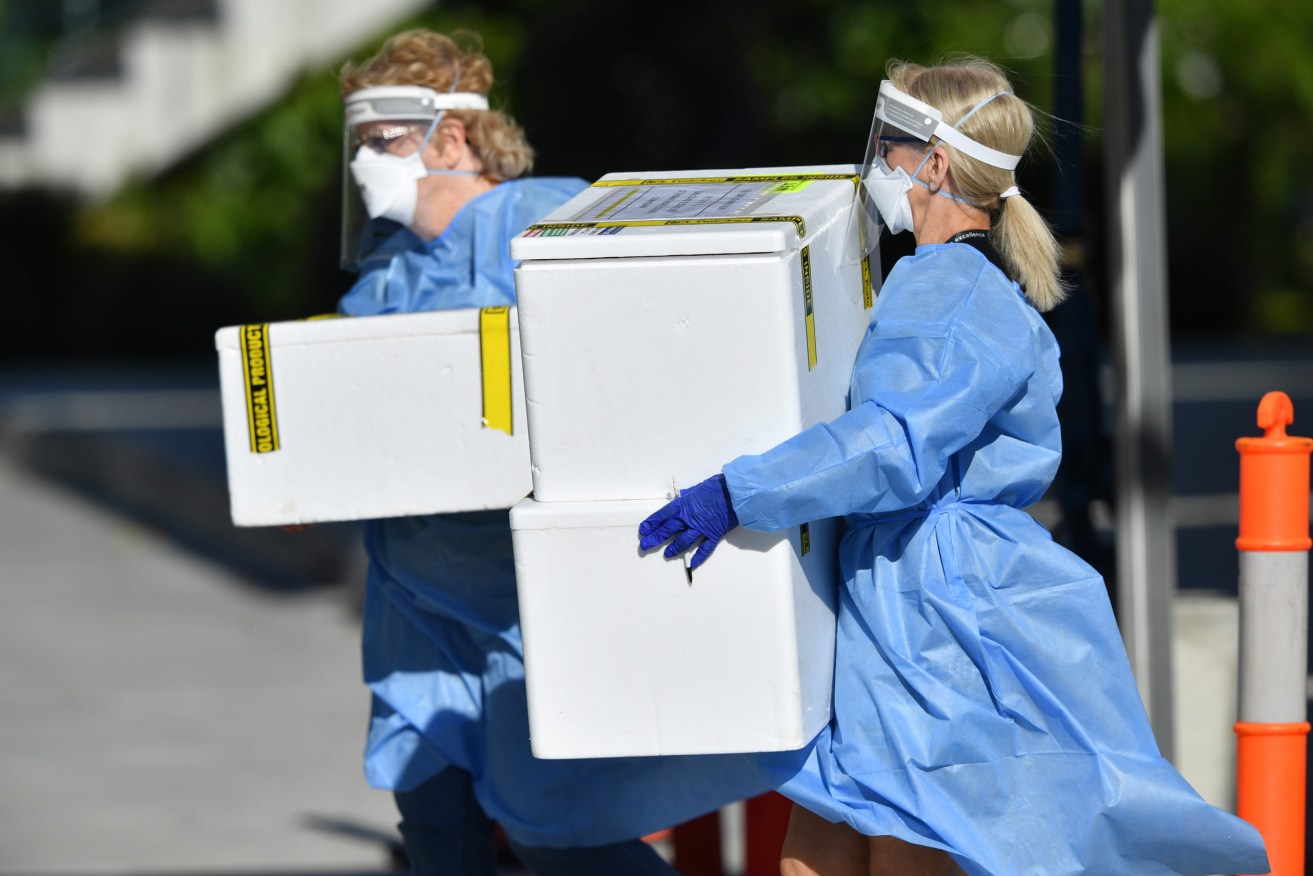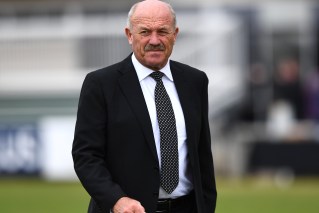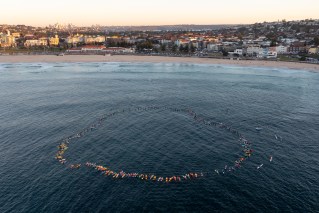Looking for leaks: Sewage testing to determine whether infections have been missed
As Lismore is sent back into lockdown, Queensland Health is monitoring sewage tests in northern NSW to determine where other threats may lie. It has also ramped up testing around the Sunnybank cluster.

Health care workers are seen at a pop-up COVID-19 testing centre at St Thomas More College in Sunnybank. (AAP Image/Darren England)
Within the interstate border bubble, a new case of COVID-19 in Lismore has Queensland on alert, as does the a case in Glen Innes, confirmed late on Wednesday night after the earlier detection of viral fragments in sewage. New exposure sites have also been listed in Goondiwindi, likely due to a visit by an infected truck driver who has since returned to NSW.
NSW today reported another 1,351 cases, and 12 more deaths, while Victoria reported 514 new locally-acquired cases.
Residents in the Lismore local government area are going back into lockdown, which will see the area removed from the border zone used by Queensland to help decide who can enter the state. No decision has been made on Glen Innes.
Queensland Health expects its NSW counterparts to do more frequent sewage testing in the north of the state to help with surveillance. Meanwhile, the cluster associated with St Thomas More College in Sunnybank, which now has a ninth confirmed case, has also prompted more local surveillance to ensure it is being contained.
Of the existing sewage testing sites in Queensland, Oxley Creek Upstream Station B detected viral fragments last week, which was expected due to the wastewater it takes from Sunnybank. Other sites have continued to detect fragments left by the Indooroopilly cluster.
Queensland Health has since brought another site online, Gibson Island Upstream Station A, which also connects to Sunnybank – including St Thomas More College – but has yet to detect any viral fragments.
“In Queensland, wastewater surveillance is just one of a number of sources of information that health authorities use to understand and respond to COVID-19 risk,” a Queensland Health spokeswoman said.
“We regularly review wastewater sampling locations in response to the rapidly changing COVID-19 situation. Gibson Island Upstream Location A was bought online to assess the COVID-19 risk in areas that contain or surround recently published exposure sites.”
In the early phases of the wastewater testing program, there were fewer sites, with more detections. Additional upstream locations were brought online to help pinpoint the original source, although hotel quarantine continues to taint larger catchment areas. Another two cases have been reported today among returned travellers in hotel quarantine.
The latest case in the Sunnybank cluster is a student who was in home quarantine while infectious. Some 1,000 families remain in home quarantine, and Premier Annastacia Palaszczuk has again thanked them for “keeping Queenslanders safe”.
Health Minister Yvette D’Ath also confirmed a home quarantine check-in system, rolled out to support a trial of boarding students in home quarantine, would also apply to all close contacts in home quarantine. It gives people 10 minutes to respond, on a mobile phone with geolocation enabled, to messages from Queensland Health.
Queensland hit a new daily record for vaccinations on Wednesday and is planning a blitz over the coming days, commencing with a pop-up vaccination clinic at the National Rugby League game being played in Mackay.
Testing rates have remained high, even as the cluster appears to have been contained, and the government is moving to ensure ethnically-diverse communities remain informed about the risks and recommendations.
Meanwhile, Palaszczuk also announced that Labor’s election promise to base GPs at 20 state secondary schools would be expanded, with 50 schools expected to benefit from early next year.
Meanwhile, Victoria’s daily case numbers have tipped over 500 after a peak medical body warned it would be “reckless” to ease COVID-19 restrictions before 80 per cent of eligible residents are fully vaccinated.
The state recorded 514 new locally acquired coronavirus cases on Thursday, with 148 linked to existing outbreaks and the source of 366 infections still under investigation.
It is Victoria’s highest daily tally since the peak of the state’s second wave in August 2020 and the new infections bring the total number of active cases in the current outbreak to 4370.
NSW has reported 1351 new locally acquired cases of COVID-19 and 12 deaths, taking the toll for the current outbreak past 200.












